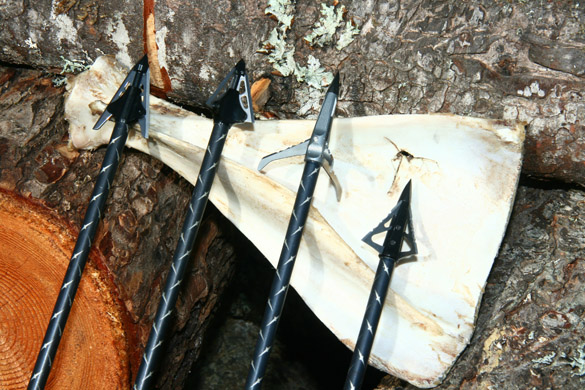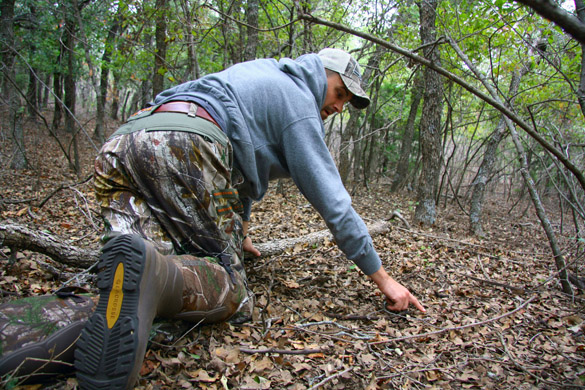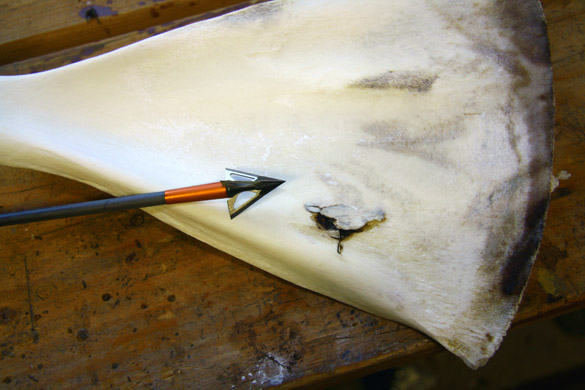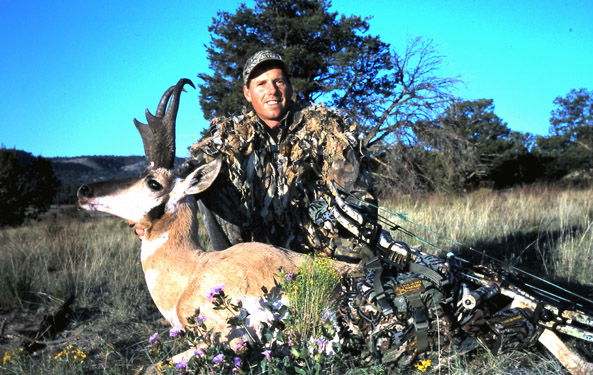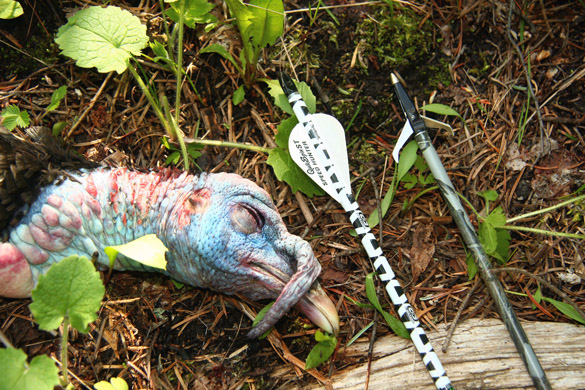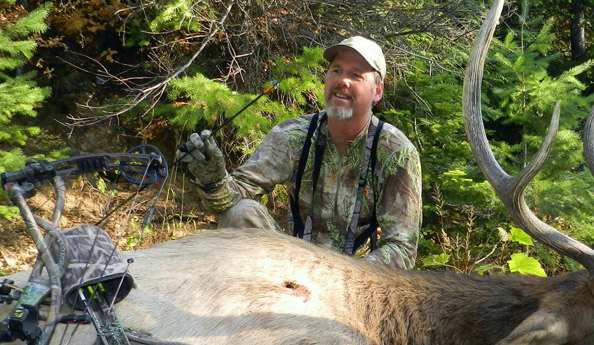LAST UPDATED: May 1st, 2015
Thirty years of collecting vintage broadheads has demonstrated to me archers will try just about anything in the search for “ideal” terminal tackle. Everybody has their own idea as to what constitutes a lethal ideal, each design normally sacrificing one thing to achieve another. For instance, one bowhunter concentrates solely on penetration, while another becomes fixated on cutting diameter, still another focusing on perfect flight at high speeds, others seeking a compromise for the conditions at hand. Yet many out there seem to think their personal ideal’s the only solution and everyone else is wrong. Nowhere does this argument become more heated than fixed- verses deployable-blade broadheads.
There are pros and cons to both mechanical and fixed blade heads. Do you know what they are?
These two approaches represent the polar opposites of broadhead design. The best fixed-blades are designed so that no matter what’s encountered every part from tip to mounting threads remains completely intact. Mechanicals include moving parts, blades swinging or sliding open to maximum cutting diameter only after impact. Each design has its advantages, and limitations.
Fixed-Blade Cons
The biggest knock against fixed-blade heads has always been they are more apt to veer off course shot from the fastest bows. This explains why as compound bows have become faster fixed-blade broadheads have grown smaller. Lay a standard New Archery Products’ Thunderhead a decade old beside a Thunderhead Edge made yesterday and you’ll see my point, the former 2 inches long and 1-3/16-inch wide, compared to 1 by 1-1/8 inches. Many argue a 1-1/8-inch cut isn’t enough to cut an animal sufficiently (more later).
Fixed blade heads will fly true if bowhunters take the time to fine tune their gear as well as their arrows. Pictured here is the NAP Thunderhead Razor post-kill.
Too, shooting fixed-blade heads religiously (which I do by Idaho law) requires better learning the fundamentals of fine-tuning equipment. For decades bowhunters got away with ill-tuned equipment because arrows didn’t fly fast enough to exhibit extreme wind-planning. With the average bow now pushing 300 fps that’s no longer possible. The fixed-blade aficionado must also employ larger, more wind-resistant fletchings (“old-fashioned” 4-inch vanes or feathers instead of 2-inch “broadhead” vanes) to assure proper balance between rear drag and broadhead surface area – a 3:1 ratio, blade surface-to-fletching-surface area a good start.
Finally, then it comes to fixed-blade design, cutting diameter as it directly correlates to tunability is also directly tied to how much flesh or vital organs they will cut while passing through game. There’s no doubt in certain situations wider-cutting heads increase your odds of recovering an animal.
Mechanical Cons
The biggest rap mechanical broadheads contend with is any time something goes wrong when a mechanical’s involved – an arrow encountering shoulder blade, for instance – the broadhead automatically gets the blame. Not bad shooting or bad judgment or poor equipment set-up – it’s all on the broadhead.
There’s a kernel of truth to every stereotype, and there’s no doubt the average mechanical can’t match the average fixed-blade for head-to-head penetration. This is partly due to the mechanical design itself. Energy cannot be created or destroyed only transferred from one object to another and moving parts subtract energy from the equation normally reserved for pushing an arrow forward. This is also largely due to the fact mechanicals typically include wider cutting diameters than fixed-blade heads. More cutting edge translates into increased friction which negatively affects penetration (which also holds true for fixed-blade heads, a 1 3/16-inch-wide fixed penetrating less than a 1 1/8-inch-wide head – all other factors remaining equal). If penetration’s paramount – bull elk or moose, as examples — a mechanical might not be the wisest choice.
Poor shooting is often overlooked and the mechanical broadhead design is often blamed for unrecovered animals.
Mechanical designs seldom match fixed-blade heads in overall ruggedness following punishing hits. Moving parts, again, make this true. Each time a mechanical impacts game an infinite number of variables is introduced. This opens the door to broken blades, wedging in bone to stop penetration cold and even “pole-vaulting” off blades on angled hits. The other malfunction occasionally encountered with certain mechanical designs is premature opening of one or more blades (especially on shoot-through screens found on modern pop-up blinds) which can really throw arrow flight for a loop. I’m not saying this is chronic, I’ve just witnessed it often enough to understand the possibility.
Fix-Blade Pros
Fixed-blades, including replaceable-blade models, are typically the strongest, most reliable designs around (traditional single-piece-welded designs the strongest). The ability of fixed-blade heads to survive impacts with steel drums or coffee cans of gravel is the mark of superior engineering and materials. Failing such destructive testing’s the mark of inferior design. Only recently I’ve shot through elk (True-Fire T1) and black bear (Stanford Innovations Bloodshot) shoulder blades with fixed-blade heads; both animals falling within sight. Those shots would’ve likely ended differently with a mechanical on the business end of my arrows.
As already hinted fixed-blade heads – especially cut-on-contact designs – out-penetrate anything else out there. When I’m bowhunting the biggest, nastiest game around (say, Cape buffalo in Africa) – or shooting limited-energy traditional gear at anything heavier than a javelina — I choose a solid-welded or single-piece milled cut-on-contact (think Zwickey, NAP Hellraiser, Solid Broadhead or Alaska Bowhuntng Supply GrizzlyStik Broadheads). Something like moose or bull elk indicates a solid cut-on-contact or cutting-tip replaceable-blade (NAP Thunderhead Razor, Steel Force Phathead, G5 Striker or Quality Archery Design’s Exodus). As game size diminishes broadhead choices lean toward wider cutting diameters and/or mechanicals.
Though I must also note, narrower cutting diameters also introduce less “shock” on impact with game. It’s a fairly common occurrence to witness animals shot with a true cut-on-contact or “mini” replaceable-blade head to act as if they have no idea they’ve been hit after the shot. I’ve had many animals – shot right through the vitals – run maybe 10 or 15 yards, stop to have a look around, growing wobbly and tipping over on the spot. They never make it out of sight because they seem to have no idea what’s happening to them. So a 1 1/8-inch cutting diameter broadhead can certainly result in drop-in-sight big-game recovery…
When all else is equal it is hard to beat the toughness and penetration of a fixed-blade broadhead.
Finally, most fixed-, replaceable-blade broadheads are extremely easy to keep sharp edges on — and as any bowhunter understands shaving-sharp edges kill more efficiently than dull ones. There are certainly mechanical designs on which blades can be replaced, but this normally includes tiny set screws at least a screwdriver and reading glasses for us older bowhunters. Most replaceable-blade broadheads can be made scary sharp by simply sliding in a fresh set of blades and screwing them home. And if broadheads have been in and out of your quiver through an entire season, or especially used for practice shooting, they should receive fresh blades before any hunting is conducted.
Mechanical Pros
It’s safe to say the first modern mechanical designs (there where swing-blade heads as far back as the 1950s) were designed with one thing in mind – eliminating wind-planning arrows as modern compound bows broke the 250 fps mark. Since most mechanical broadheads include in-flight geometry holding blades tight to the ferrule or completely closed (deploying to full cutting diameter only after impact) they present no surface areas for passing wind to grab or push against. The standard mechanical with blades folded flat to the ferrule in flight most often provides flight characteristics similar to field or target points. This makes them the most accurate choice for long-range shooting on light-boned, thin-skinned game such as pronghorn and also less prone to deflections in brushy conditions often encountered while whitetail hunting.
Less wind-planning and larger cutting diameters make mechanical broadheads a popular choice for whitetail hunters and especially when hunting open-land animals like the pronghorn.
The other huge selling point of the mechanical design is increased cutting diameter and devastating tissue damage. One and a half to 2-inch cutting diameters (sometimes more) would just be impossible with a fixed-blade head. This provides an obvious advantage in many bowhunting situations, providing a wider margin for error, “wider” blood trails and faster bleed-out. I wouldn’t think of shooting a turkey with their baseball-sized vital area with anything but a mechanical. I’ve witnessed plenty of mechanical-induced blood trails appearing to have been issued from a garden hose. And if I unintentionally gut-shoot an animal in the coming season I hope to have a wide-cutting mechanical producing a massive wound channel.
Mechanicals are also great when shooting game animals with very small “kill-zone’s” like the turkey. Pictured here is the NAP Gobbler getter.
Finally, you’ll hear a lot of bunk about mechanicals failing to open after impact. I’m here to tell you I’ve intentionally tried to rig mechanicals to NOT open after impacting foam targets (for use as practice points), wrapping blades closed with tough dental floss, even going so far as to super glue blades into the slots. They open anyway. It’s nearly impossible mechanically to make them do otherwise.
There are no absolutes in broadhead choice, but I do live by the maximum of “matching the rig to the gig.” Would I use an average mechanical on an Alaska moose hunt? Absolutely not. Would I use a mini fixed-blade for spring turkey? Not if I could help it.
The author pictured here, lives by the broadhead rule “match the rig to the gig”. It has served him well over the years.
But on the average-sized whitetails most of us pursue there really is no wrong answer (unless you’re at the low end of the energy scale; youth or woman shooters wielding less than 50 pounds and a draw length less than 27 inches). My basic rule of thumb is if you’re achieving complete pass-throughs on most of the game you shoot, no need to worry. If not, maybe you should consider a more efficient broadhead design made for better penetration.
What is your favorite broadhead? Why?

 By
By 